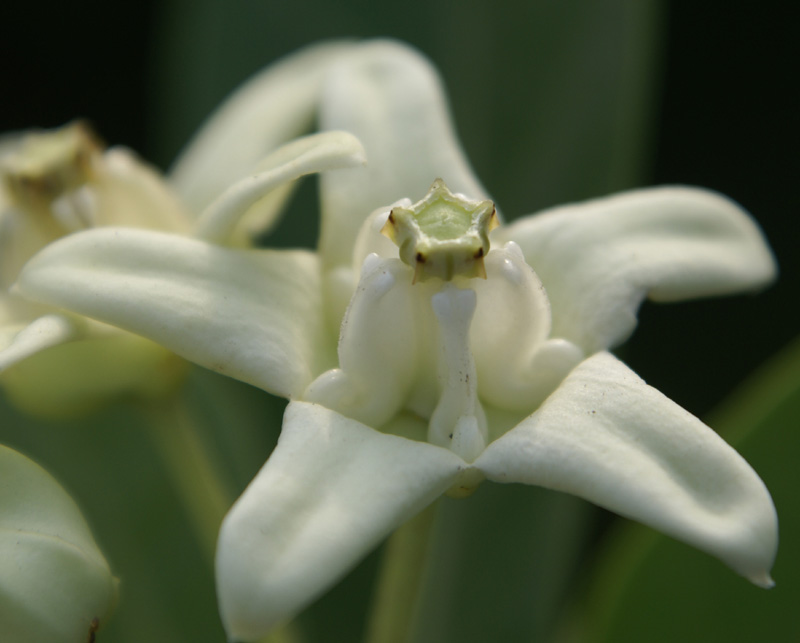
Scientific Name : Calotropis gigantea (L.) W.T.Aiton
Category : Angiosperms
Status : Alive
Habit : A large shrub, much branched, gregarious, young branches covered with white, cottony hairs, contains milky latex. Stem : Erect, branched, cylindrical, solid, contains milky latex. Leaves : 4-8 inches long, decussate, obovate or elliptic-oblong, shortly acute, subsessile, cordate or often amplexical at the base. Inflorescence : Umbellate cymes. Flowers : Large, white, not scented, peduncles arising between the petioles. Flower-buds ovoid, angled, Calyx lobes 5, divided to the base, white, ovate; corolla broadly rotate, valvate, lobes 5, deltoid ovate, reflexed, coronate-appendages broad, obtusely 2-auricled below the rounded apex which is lower than the staminal-column. Stamens 5, anthers short with membranous appendages, inflexed over the depressed apex of the pentagonal stigma. Pollinium one in each cell, pendulous caudicles slender. Carpels 2 distinct, styles 2, united to the single pentagular stigma, ovary 2-celled, ovules many. Fruit : A pair of follicles with many, hairy seeds. Flowering and Fruiting Time : November-April Significance : Common as weed in waste lands. The root, bark and milk used in medicine for the treatment of dysentery cutaneous affections. The leaves are applied on paralysed parts, painful joints. The milk is useful in leprosy and ringworm.
Specimen Information
-
Common Name(s):
मंदार, Milkweed
-
Synonym(s):
Periploca chinensis Decne. Periploca cochinchinensis Lour. Streptocaulon cochinchinense (Lour.) G.Don Asclepias argentata Noronha Asclepias gigantea L.
-
Family:
Apocynaceae
About Me:
-
Created By:
admin
Botany Department (DVP College, Nimgaon Sawa) -
Created On:
13-08-2022
-
Contact:
Phone: 9960072282
Email: [email protected]
Find Location:
Photo Gallery







